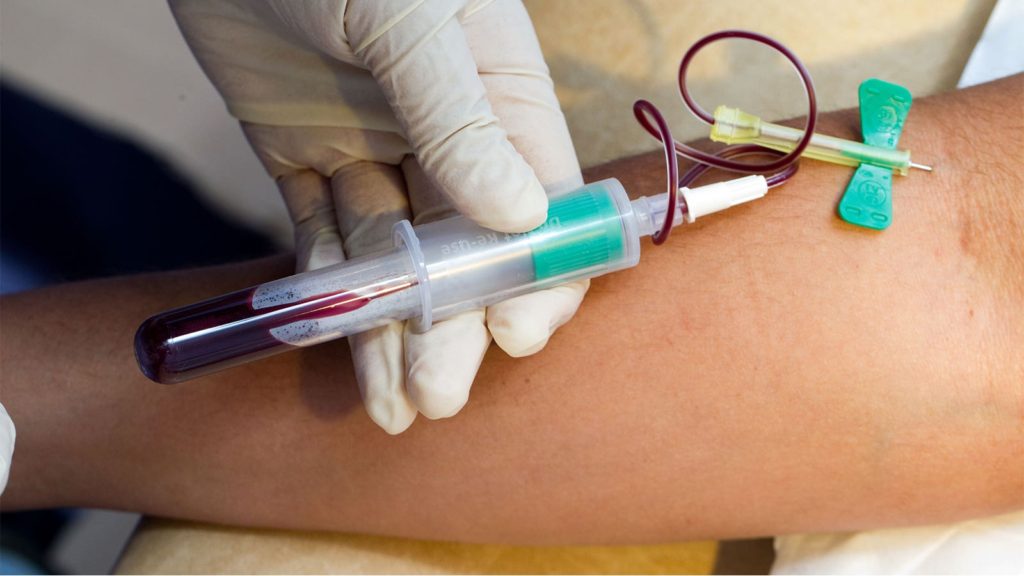Long COVID patients had specific differences in immune and hormone function than other people, blood tests showed.
Compared with matched controls, people with long COVID had marked differences in circulating myeloid and lymphocyte populations, reported Akiko Iwasaki, PhD, of Yale University in New Haven, Connecticut, and co-authors in Nature.
Long COVID patients had exaggerated humoral responses directed against SARS-CoV-2. In addition, their antibody responses were higher against other pathogens that weren’t SARS-CoV-2, especially Epstein-Barr virus (EBV).
An algorithm that incorporated blood test and self-reported survey data showed diagnostic potential with an area under the curve (AUC) of 0.94, Iwasaki and co-authors found.
“We found a number of immunological and hormonal factors that collectively are able to distinguish people with versus without long COVID at 94% accuracy,” Iwasaki told MedPage Today. “This study speaks to the underlying biological causes of long COVID and provides a basis for future studies that interrogate various therapies that target the root causes of this disease.”
“The reduced cortisol levels found in the long COVID patients suggest hypothalamus-pituitary-adrenal imbalance,” she pointed out. “The elevated activated B cells and exhausted T cells suggest persistent antigen and potentially persistent virus infection. The EBV reactivation, which was demonstrated by others also, inform about a subset of patients who may benefit from EBV-targeting therapies.”
This work is “a crucial first step towards identifying a set of biological differences between people with and without long COVID” and may lead to novel blood biomarkers for an objective diagnosis of long COVID, co-author David Putrino, PhD, of Icahn Mount Sinai in New York City, told MedPage Today.
The study “provides physicians with important insights by highlighting the fact that people with long COVID show measurable signs of hormonal and immunological dysfunction, which should serve as further irrefutable evidence that long COVID is not a functional or psychosomatic diagnosis,” Putrino said.
Long COVID symptoms — ones that lasted more than 3 months after acute infection — affected 7.5% of U.S. adults according to 2022 CDC data. By June 2023, that percentage fell to 6%.
Symptoms of long COVID can include postexertional malaise, fatigue, brain fog, dizziness, gastrointestinal symptoms, palpitations, changes in sexual desire or capacity, loss of or change in smell or taste, thirst, chronic cough, chest pain, and abnormal movements.
In their analysis, Iwasaki and colleagues evaluated data from about 273 people with and without long COVID from Yale and two Mount Sinai locations.
The researchers looked at several groups, including people with no previous SARS-CoV-2 infection, those who had fully recovered after COVID, and those with active long COVID symptoms for 4 months or longer after COVID. The median length of symptoms in the last group was 12 months after acute infection.
Participants completed questionnaires about symptoms, medical history, and health-related quality of life, and provided blood samples. Most acute infections in the long COVID group occurred early in 2020, when parental SARS-CoV-2 strains drove most new cases.
Long COVID participants had a mean age of 46 and convalescent controls had a mean age of 38, but the two groups did not differ in sex or hospitalization for acute COVID. The aggregated medical history of the two groups did not differ in baseline prevalence of anxiety or depression.
Fatigue (87%), brain fog (78%), memory difficulty (62%), and confusion (55%) were the most common self-reported symptoms in the long COVID group. Postural orthostatic tachycardia syndrome (POTS) also was prevalent; 38% of people with long COVID in the study had formal diagnostic testing and clinical evaluation. Half of participants with long COVID reported negative effects on employment status.
Serum cortisol was the most significant predictor of long COVID status. Other biomarkers indicated abnormal T cell activity and reactivation of multiple latent viruses, including EBV and other herpesviruses.
The findings on EBV, herpesviruses, and low cortisol are especially important, observed Ziyad Al-Aly, MD, of Washington University in St. Louis and chief of research and development at the VA St. Louis Healthcare System, who wasn’t involved with the research.
“They may help inform treatment trials,” he told MedPage Today. “For example, whether treating EBV or cortisol replacement would ameliorate symptoms and improve outcomes would need to be considered in the light of these findings.”
People with long COVID often are told the disease is “all in your head,” Al-Aly noted.
“This study provides objective evidence of significant differences in the immune profiles of people with long COVID versus matched controls.” he said. “I hope this puts the ‘it’s all in your head’ idea to rest.”
-
Judy George covers neurology and neuroscience news for MedPage Today, writing about brain aging, Alzheimer’s, dementia, MS, rare diseases, epilepsy, autism, headache, stroke, Parkinson’s, ALS, concussion, CTE, sleep, pain, and more. Follow
Disclosures
This work was supported by the National Institute of Allergy and Infectious Diseases, FDA Office of Women’s Health Research Centers of Excellence in Regulatory Science and Innovation, Emergent Ventures at the Mercatus Center, the Howard Hughes Medical Institute Collaborative COVID-19 Initiative, and the Howard Hughes Medical Institute.
Researchers reported relationships with UnitedHealth, Element Science, Identifeye, F-Prime, Refactor Health, Hugo Health, CMS, FDA, Johnson & Johnson, Google, Pfizer, Thyron, Boehringer Ingelheim, Pliant, AstraZeneca, RoBar, Veracyte, Galapagos, FibroGen, BMS, RIGImmune, Xanadu Bio, PanV, Paratus Sciences, InvisiShield Technologies, Roche, and Seranova Bio, and are inventors of a patent describing REAP technology.
Primary Source
Nature
Source Reference: Klein J, et al “Distinguishing features of long COVID identified through immune profiling” Nature 2023; DOI: 10.1038/s41586-023-06651-y.
Please enable JavaScript to view the

